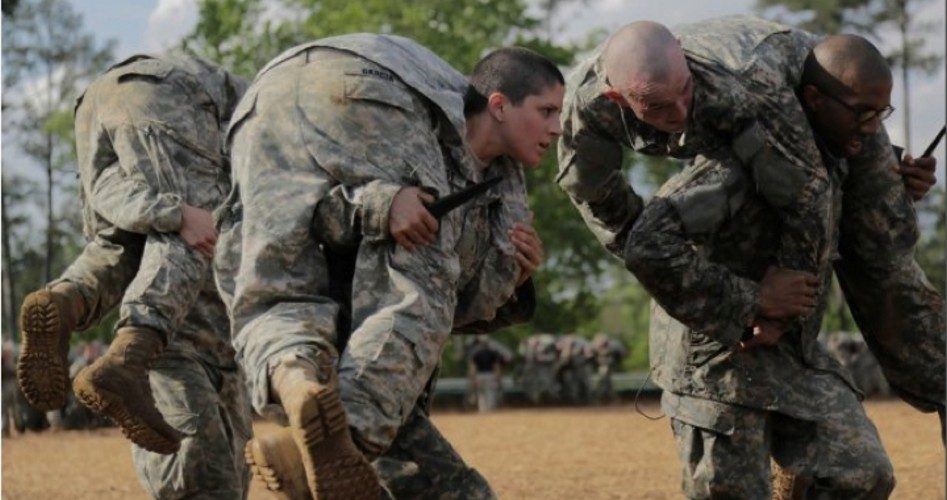
With the decision of the Obama Defense Department to include women in combat, the question has naturally arisen as to whether young women should also be included in registration for the draft, along with young men. That, in turn, should raise another question: Do we even need draft registration, or for that matter, the United States Selective Service System?
After Congress abolished the draft in 1973, the legal requirement that young men register for the draft ended as well. Then, in 1980, following the Soviet invasion of Afghanistan, President Jimmy Carter responded by calling for the reinstatement of draft registration, if not the draft itself. Proponents at the time argued that this would provide a pool of names, and shorten the time to increase the size of the armed forces, should a draft ever become necessary.
Carter’s Republican opponent, former California Governor Ronald Reagan flatly opposed the move, but never made the law’s repeal a major issue during his eight years as president and his huge military build-up. Without a draft, the nation’s military force enjoyed a significant increase in morale with an all-volunteer force.
It has been almost a half century since anyone was drafted, during which time the United States has engaged in many military conflicts — notably, the First Persian Gulf War, the invasion of Afghanistan, another war in Iraq, the liberation of Grenada, and the invasion of Panama — and, in all cases, has done so with a volunteer army.
Some proponents of a return to the draft make the case that there is more resistance to war when there is a draft, and that a volunteer force relies more on lower economic classes than a conscript army. The latter argument is an example of class politics, while the former has not been borne out in practice. The United States created the first peacetime draft in its history in 1940, in response to the war raging in Europe. There was certainly strong opposition to America entering the war in Europe (with the non-interventionist America First Committee drawing huge support with its efforts to keep the country out of the war), and the Selective Service Act was only narrowly renewed in 1941. Whatever its merits, the draft did not keep the nation out of World War II, the Korean War, or the Vietnam War.
If anything, it was the Vietnam War that brought an end to the draft, and the Selective Service System, in 1973. Technically, the Selective Service System continued to exist, in “standby status” for the next seven years, until draft registration, if not the draft itself, was reinstated.
Now, the issue of whether to include women in draft registration has focused attention on the Selective Service System again. Somewhat surprisingly, Republican presidential candidates Senator Marco Rubio and former Governor Jeb Bush have both said they favor including women in draft registration. New Jersey Governor Chris Christie, who has since exited the race for president, agreed with them. Of all the Republican hopefuls, only Senator Ted Cruz has offered opposition to the idea, citing it as an example of political correctness, and dismissing it as “nuts.”
Draft registration is a relic of the Carter presidency, and an example of what his opponent in 1980, Ronald Reagan, called the closest thing to eternal life on this planet: a government program. For example, a phone tax was implemented in 1898 to pay for the Spanish-American War, but it was not repealed until a hundred years later. It is doubtful anyone feared that the Spanish might try to re-take Cuba, Puerto Rico, or the Phillippines, but once the government creates a tax or a program, it is extremely difficult to end. The Selective Service System itself was created in 1917, with the entry of the United States into World War I. The Kaiser may be long gone, but the Selective Service is still with us.
Yet, it is difficult to make the case for continuing draft registration, or the government agency that administers the program: the Selective Service. The principal argument for draft registration — to respond quickly in a national emergency — falls flat. First of all, draft registration wouldn’t necessarily make conscription a quick process. The government still has to find the people who registered. As was noted by Wikipedia, “The only audit of the addresses of registrants on file with the Selective Service System, in 1982, found that 20-40% of the addresses on file with the Selective Service System for registrants in the age groups that would be drafted first were already outdated, and up to 75% for those registrants in their last year of potential eligibility to be drafted would be invalid.” Also, the Reserves and the National Guard stand ready to defend the nation along with the regular armed forces, to repel any attack upon the United States. Having a pool of names available for the draft would not make any difference in providing any needed national defense.
Under current law, all male U.S. citizens are obligated to register with the Selective Service within 30 days of reaching their 18th birthday. The last prosecution for not registering for the draft was in 1986. In a humorous twist, in 2014, a clerical error in Pennsylvania led 14,250 men to be provided to the Selective Service System. But these men were unlikely to be included in any draft because, instead of having birth dates in the years 1993-97, they were men the Pennsylvania Department of Transportation had passed onto the Selective Service System who had been born in 1893-97.
Representative Mike Coffman (R-Colo.), a combat veteran, has sponsored a bill to abolish the Selective Service. He has called for an end to the mandatory draft registration, contending that “our all-volunteer military has given us the most elite fighting force in the history of this country.”
With the radical effort to include young women in any draft registration, the move to terminate the Selective Service, around since 1917 in form or another, is an idea that could now receive a much more sympathetic hearing for Congressman Coffman — especially since it’s an easy $24 million a year that the Congress could cut from the budget.
Steve Byas is a history professor at Hillsdale Free Will Baptist College in Moore, Oklahoma. His book, History’s Greatest Libels, challenges many of the falsehoods told against great historical figures such as George Washington, Christopher Columbus, and Joseph McCarthy.



